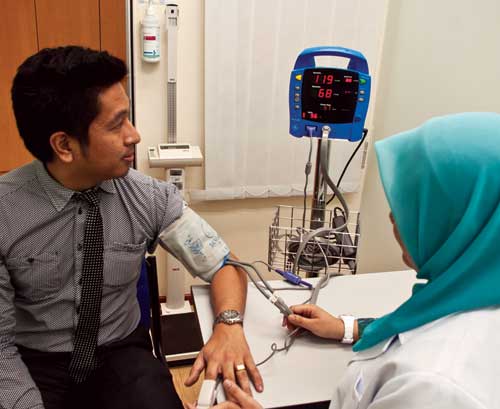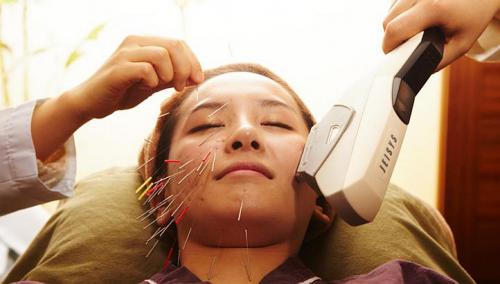
Investment in human capital has been identifi ed as a key driver in boosting the quality of Malaysia’s health care standards while seeing growing economic returns from the industry.
However, underinvestment in health services continues to pose a risk.
Under its Economic Transformation Programme (ETP), unveiled in September 2010, the government aims to transform the country into a high-income economy bracket by 2020, with the health sector targeted as central to this plan.
As one of the 12 national key economic areas (NKEAs), health care is targeted to become a significant economic enabler by generating revenue through health tourism, as well as manufacturing drugs and equipment.
The sector also aims to create 180,000 new positions in health care and attract up to one million overseas health tourists annually by the beginning of the next decade.
To achieve that goal, however, spending in the sector will need a significant boost.
Currently, Malaysia dedicates the equivalent of 4.7 per cent gross domestic product (GDP) on health services.
This is lower than most middle-income nations’ spend, which averages 6.5 per cent, according to the World Health Organisation.
One of the core areas for that increased investment is human capital.
The Health Ministry has set a series of targets to increase the ratios of health sciences professionals to the general public.
Once the ETP has completed its term by 2020, offi cials believe Malaysia will have one doctor for every 400 citizens, compared with the present rate of around 1:800, and one nurse for every 200 people, up from the current level of 1:384.
To achieve this, Malaysia is boosting its health education training schemes.
In late July, Muhyiddin Yassin, the Deputy Prime Minister, said the government was planning to increase the number of higher education institutions in the fi eld of health science to 150,000 by 2020, up from the present 55,000.
According to Muhyiddin, who is also Malaysia’s Education Minister, “I believe Malaysia can play a central role in answering the need for more health professionals in the region.
As such, health sciences students, who are considered highly skilled and employable, can expect a brighter future in this field.” On July 14, in a speech delivered on her behalf at a graduation ceremony at a health training institute in Sabah, Rosnah Abdul Rashid Shirlin, the Deputy Health Minister, said the government was moving to accelerate the pace of improvements in sectoral education.
The ministry was committed to ensuring that graduates have the knowledge and skills required, as well as providing training institutions equipped with modern facilities and qualified teaching staff.
“If we see the development of global health at present, the world needs specialists to develop public health,” Rosnah said.
The Minister of Health, Liow Tiong Lai, recently acknowledged that the task of increasing the number of specialists was a difficult one.
Health education is a rapidly evolving segment, meaning the health sector and educators must move quickly to keep pace with needs of the industry.
“Although the system has been quite successful, we must not rest on our laurels but work tirelessly to ensure that our medical staff will be able to meet the demands of the market, which can change quite rapidly,” Liow said at an international health care conference in Kuala Lumpur on July 17.
“However, quantity alone is no longer sufficient because quality also matters in the industry to achieve the excellence in not only curing but also caring.” There are many challenges that Malaysia’s heath sector faces, including rising costs and more demanding and knowledgeable consumers, Liow said.
One of the answers to these challenges will be the industry’s ability to train, attract and retain qualified personnel.
The issue of retention was a vital one, according to Dr Ismail Merican, the former director-general of health, as was the ongoing process of improving the skills base of those already in the system.
In particular, Merican told local media, the government needed to step up investments in the public health care sector, strengthen its teaching role and ensure professionals were better compensated to keep them within the local system.
If Malaysia is to achieve its goals, it will need a strong health sector to underpin growth, both to ensure the wellness of society but also as a foundation for sectoral expansion.
Increased spending, as well as further encouraging the already active private health services sector to ramp up investments along the training and development chain, will be required.
source: http://www.theborneopost.com / Home> BizHive / Sunday, August 19th, 2012




